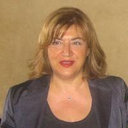[The different present-day clinical picture of human African trypanosomiasis caused by T. b. gambiense. Analysis of 300 cases from a focus in Daloa, Ivory Coast].
Keywords
Abstract
300 patients with sleeping sickness have been admitted, at the AHT clinic of Daloa, over a time period of 22 months. The sex ratio of the patients is 1.5 males for 1 female; the mean age is 25.5 years. The most frequent signs and symptoms observed by clinical examination are: fever (30%), nodes (86.3%), prurigo (43.3%), splenomegaly (15.3%), hepatomegaly (1%), headache (72.6%), vigilance and sleeping disturbances (68.7%), perioral reflexes (67.6%), cheiro-oral reflexes (64.3%), movement disorders consisting of tremor, choreo-athetosis movements, buccal dyskinesia or seizures (35%), motor palsy and gait disorders (15%), tonus disturbances (12.3%), sensitivity abnormalities (17%), endocrine disorders (16.3%), psychiatric symptoms (6.3%). According to CSF status, 261 patients have been classified in second period (P2). This group, although biologically well defined, is in fact a miscellaneous group of clinical signs and symptoms ranging from apparently normal patients to sleeping comatose and cachectic patients. 93% of the patients in this group have peripheral signs associated with neurological symptoms. They are as frequent in the first period as in the second period, with a statistical significance. This is an argument to think that the CNS is early affected in the course of the disease. The classification of the patients in groups of increasing neurological impairments, is in accordance with this hypothesis. 89% of the patients in the second period have only slight neurological signs. This explain how difficult it is for a physician to use melarsoprol in the treatment of all patients classified in second period.


